Introducing children to instruments at an early age is smart parenting, as many studies have shown that kids who play music do better in school and in social life.
The guitar is a straight forward choice if you want to buy your child an instrument. It’s cool, inexpensive, and even though it takes practice and patience, it’s not overly difficult to learn.
If you don’t play guitar yourself, you probably have a lot of questions on what size guitar is good for your child, how much you should spend, which guitars are suitable for kids, etc. I’ve been playing guitar for 20+ years and have 2 small children who have started as well.
This guide entails what I’ve learned through experience in choosing the best guitar for kids.
Contents
Is an electric or acoustic guitar better for kids?
Choosing between the two is all about preference.
You have to find out the kind of music your child is fond of listening to. For example, if he fancies Metallica and AC/DC, the best choice for him would probably be an electric guitar.
Remember that if you get an electric guitar, you’ll also need a guitar amplifier. Thankfully, recent demand has prompted guitar companies to offer customers starter packs that feature the guitar, an amplifier, as well as additional accessories.
The best part about electric guitars is that they are generally user-friendly and compared to acoustic guitars, your child will find the strings easier to press down on.
However, if your child hasn’t yet displayed a notable liking to music yet, and you are just trying to get him acquainted with a guitar as a hobby, then an acoustic classical guitar would be the better alternative.
An acoustic guitar has either nylon or steel strings. A nylon-stringed acoustic is, in most cases, used for classical music. This is called a classical guitar.

Although you might be tempted to get your beginner child a nylon string guitar because the strings will be gentler on his fingers, you need to keep in mind that these guitars also have a wider neck. This can pose a challenge for your kid’s hand when playing.
You’d be better placed going for a regular steel-string guitar if you decide to buy an acoustic guitar. You’ll realize you made the right choice as your child learns to play it.
What guitar size is best for kids?
A guitar of the ideal size will prevent possible frustrations as your child starts learning to play the instrument.
The body size, as well as the size of the guitar’s neck, should be significantly smaller for kids guitars. This is important, as children cannot handle guitars that are too big for them.
The measurement for small body guitars is based either on the scale, e.g. ¼ scale guitar or distance between the nut and bridge, e.g. 30 inches. The scale, in this case, is the distance from the nut to the bridge, and can also refer to the area on the string that vibrates when it is plucked.
When considering kid’s guitars, the overall length may not be the best indicator. This is because kids will do better on a guitar that has a shorter neck based, chosen based on their age or height.
The best way to go when determining the right size of guitar for a child, is the scale. A shorter scale goes hand in hand with a shorter neck.
There are typically 3 main sizes of kid’s guitars, and when selecting the right size for your child, the two essential aspects to consider are age and height.
| Guitar scale | Child age | Height |
|---|---|---|
| 1/4 | 4-6 years old | 3’9″ (110 cm) |
| 1/2 | 5-8 years old | 4’3″ (130 cm) |
| 3/4 | 8-11 years old | 4’8″ to 5’1″ (142-155 cm) |
Your child’s height is more important than age. If he’s a big one and falls into a larger scale than based on his age, go for the larger one.
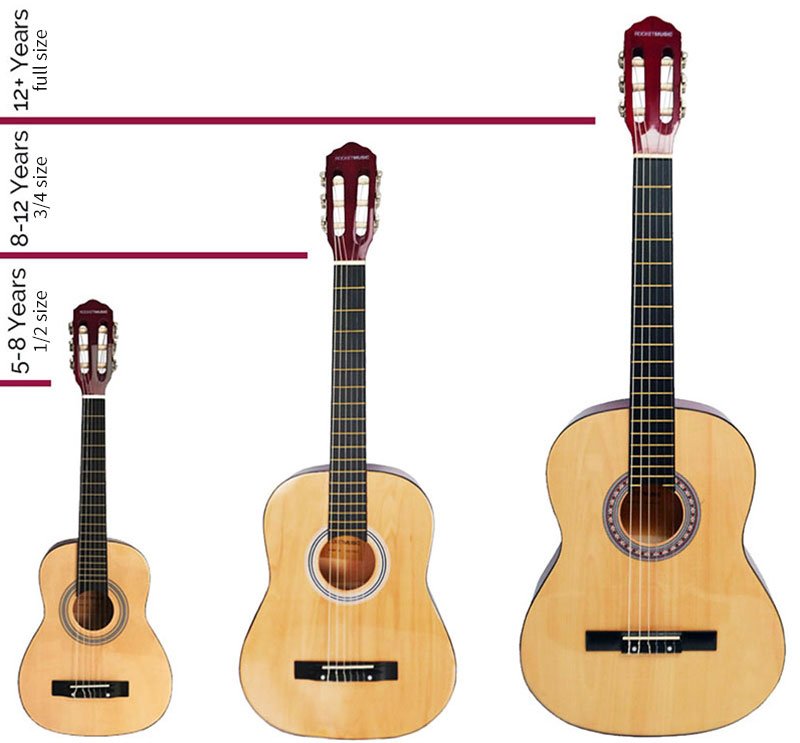
If your child is over 12 years old and is of average height for his/her age, you can get a full-size guitar.
You should now have a relatively sound idea regarding what type of guitar your child would like to have, and what size it should be, so let’s have a look at some great guitars for kids.
Best acoustic guitars for kids
If your child prefers listening to folk music, or you just want to get him started on something, here are some of the most popular beginner acoustic guitars for children I’ve come across that I can recommend.
| Guitar | Description | Size | Details | |
|---|---|---|---|---|
| 1. |  | Best Value for Money Yamaha FG JR1 or JR2 Best value kids guitar, this is our top pick. | 3/4 scale (age 8-12) | Details |
| 2. | 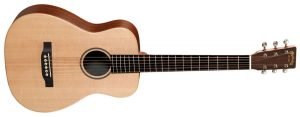 | Premium Pick Little Martin LX1 The best 3/4 size guitar on the market, but high quality demands a higher price. | 3/4 scale (age 8-12) | Details |
| 3. | 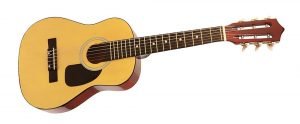 | Hohner HAG250P The only 1/2 scale guitar that can be called a real instrument. | 1/2 scale (age 5-8) | Details |
| 4. |  | Baby Taylor BT1 Quality close to the Little Martin, great design. | 3/4 scale (age 8-12) | Details |
| 5. | 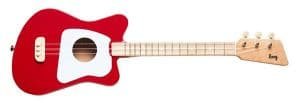 | Loog Mini & Pro Innovative 3 string construction to make learning easier. | 1/2 & 3/4 scale (age 5-12) | Details |
Yamaha FG JR1 or JR2
This 3/4 scale, steel-stringed acoustic guitar is probably your best choice. It is priced well, has a solid spruce top for a full tone, and is a good quality beginner guitar. I’d go for the JR2 model, it’s available on Amazon. The Yamaha JR1 is very similar, but the JR2 is made of better wood and does not cost much more.
Yamaha FG JR1/JR2 Ratings
-
Playability
-
Sound
-
Quality
-
Value for money
Yamaha FG JR1 and JR2 review summary
Yamaha FG guitars are high-quality instruments, and the JR line is no exception. The JR1 and JR2 provide exceptional quality for the money you pay. The guitar stays in tune, has good playability and intonation, and is as loud as you can expect a guitar of this size to be. It is advertised as a 3/4 scale guitar, but it is on the smaller end of the spectrum.
Little Martin LX1
This 3/4 scale guitar is probably the highest quality kid’s guitar money can buy. Don’t let the size fool you, this one is played by pros as well. Not the cheapest as you can see, but a great acoustic guitar overall.
Little Martin LXI Ratings
-
Playability
-
Sound
-
Quality
-
Value for money
Martin LX1 review summary
This is one of the best 3/4 sized guitars on the market. If not the best altogether. The sound is great for a guitar of this size, as is the playability. The gig bag supplied protects the guitar well. The only thing I would change is the material of the back and sides.
Hohner HAG250P
A budget 1/2 scale beginner classical guitar with nylon strings for those little fingers. Good 1st guitar for the youngest of musicians at a very good price.
Hohner HAG-250P 1/2 scale childrens guitar ratings
-
Playability
-
Sound
-
Quality
-
Value for money
Hohner HAG-250P review summary
This 1/2 scale guitar is an acceptable choice for introducing your child of ages 5-9 to the world of the guitar. It is affordable, the nylon strings are easy on the little fingers, and the low action makes it easy to play. However, it is made of Agathis wood (a soft type of wood prone to dings), and it’s best to change strings right at the start to alleviate tuning problems.
Baby Taylor BT1
The 3/4 scale Baby Taylor is the only small guitar who’s quality comes close to that of the Little Martin, but at the same price point. Taylor Swift has a signature model of this little acoustic guitar, which might provide extra motivation to your little guitar student.
Baby Taylor BT1/BT2 Ratings
-
Playability
-
Sound
-
Quality
-
Value for money
Baby Taylor review summary
The action of the Baby Taylor was great out of the box. The tuners and factory strings felt great, as did the ebony fretboard. The volume is rather good, but the lower registers are lacking (due to the size of the guitar). This is a very capable first guitar for kids, or a traveler guitar.
Loog Mini and Pro
The Loog line of acoustic kid’s guitars comes in a 1/2 size Mini version, as well as the 3/4 size Pro version. Their 3 string setup developed for children makes them unique.
Loog Mini & Pro acoustic guitars
-
Playability
-
Sound
-
Quality
-
Value for money
Loog Mini/Pro review summary
The Loog line of kid’s acoustic guitars makes for a great starter guitar. These guitars were designed specifically with children in mind, from the small radius neck, sturdy build, and the 3 string setup. Playability is good, and the sound is what you can expect from a guitar this size. The lesson app and flash-cards really aid the learning process.
Best electric guitars for kids
If you find that your little one loves rock music, you should probably get a beginner electric guitar for him/her. All of the electric guitars on this list are 3/4 scale, I haven’t come across a decent 1/2 scale one yet.
Remember that you’ll need a guitar amplifier as well.
| Guitar | Description | Size | Details | |
|---|---|---|---|---|
| 1. |  | Editor's Choice Mini Strat Sounds great, holds tuning well, and is versatile. This guitar is hard to beat. | 3/4 scale (age 8-12) | Details |
| 2. | 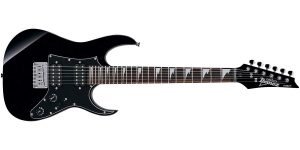 | 2nd Choice Ibanez Mikro After a setup, this is a fine guitar with lots of style. | 3/4 scale (age 8-12) | Details |
| 3. | 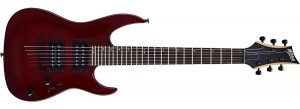 | Mitchell MM100 A cheaper option from Guitar Center | 3/4 scale (age 8-12) | Details |
| 4. |  | Peavey Rockmaster Not the highest quality, but great designs for kids. | 3/4 scale (age 8-12) | Details |
| 5. | 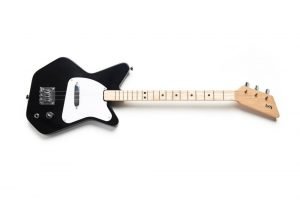 | Loog Pro Electric 3 string design and slightly smaller than 3/4 scale. | 3/4 scale (age 8-12) | Details |
Squier Mini Strat
This 3/4 size Stratocaster is my 1st choice for a beginner electric guitar. It plays well, and it is affordable. It also comes in the form of a starter kit with an amp, great value.
Squier 3/4 Scale Strat Electric Guitar Ratings
-
Playability
-
Sound
-
Quality
-
Value for money
Squier Mini Strat review summary
This short scale guitar is a great choice if you’re looking for a small electric guitar for your child. It sounds great, holds tuning well, and is versatile thanks to the 5-way pickup selector and single coil pickups. This guitar at this price point is hard to beat.
Ibanez Mikro
This 3/4 scale electric guitar is a real rocker in all aspects, from the shape to the double humbuckers. It comes in many colors, so it’s worth a look if the style fits with your child. Price is good as well.
Ibanez GRGM21 Mikro Electric Guitar Ratings
-
Playability
-
Sound
-
Quality
-
Value for money
Ibanez Mikro review summary
If you’re looking for a decent 3/4 scale electric guitar at a good price, you may have just found it. The guitar needs a set-up and new strings, but afterward, it’s easy to play and sounds good. It will make a fine first guitar for your little one, or even for yourself if you’re looking for a guitar of this size.
Mitchell MM100
This 3/4 scale electric is a budget option, but it gets the job done. Perfectly suitable as a 1st guitar for a child.
Mitchell MM100 Electric Guitar Ratings
-
Playability
-
Sound
-
Quality
-
Value for money
Mitchell MM100 review summary
This 3/4 size electric guitar is a truly budget-friendly way of introducing kids to the world of the guitar. It is not spectacular in any shape or form, but it is a playable instrument, not a toy. Mitchell is GuitarCenter’s house brand, all their guitars get a quality inspection in the USA upon arrival from China. At this price, it is hard to beat.
Peavey 3/4 Rockmaster
This 3/4 scale guitar has awesome prints your little super hero fan might like. It’s slightly more expensive than the Squier though.
Peavey Rockmaster 3/4 Electric Guitar Ratings
-
Playability
-
Sound
-
Quality
-
Value for money
Peavey Rockmaster 3/4 review summary
If your little one is a superhero fan and wants to start learning the guitar, you need to look no further. This little Peavey is an ideal 1st guitar to learn on. It’s not the highest quality 3/4 scale on the market, but it is unique and good enough to learn on.
Loog Pro Electric
This Loog guitar is the smallest 3/4 size guitar on the list. As the acoustic versions, this one only has 3 strings as well.
Loog Pro electric guitar
-
Playability
-
Sound
-
Quality
-
Value for money
Electric Loog Pro review summary
The 3 string guitars made by Loog are designed specifically with kids 6-12 in mind. The electric Loog is made of quality materials, but intonation is off. The supplied flash cards and app are nice to have, but your child will still need your help in learning.
How much should you pay for a kid’s guitar?
For a small child, your budget should range between $100 – $200. This price is enough to get you a reasonable guitar that will stay in tune and allow you to comfortably play decent music with it.
Meanwhile, if you are purchasing the guitar for your teenage child with the hope that it will last a while longer, set aside a budget in the range of $300 – $400.
As you can above, you don’t have to break the bank to find a decent instrument.
Thanks to advancements in technology and manufacturing, there are several good instruments that you can get your hands on at acceptable prices. There is no harm in spending a little bit more to get a better quality of guitar if you have the money.
It doesn’t make much sense to spend a fortune on this when he is only getting started, but you can rest assured that even the cheaper alternatives on this list will make a fine beginner instrument for your child.
Don’t try to save by going for the cheapest guitar available; these tend to pose a challenge when playing by constantly going out of tune, or just cracking. This is a frustrating experience that you don’t want your little guitar newbie to go through.
At what age should you start teaching a child guitar?
Learning the guitar requires self-discipline and practice. It is not worth trying to teach guitar to a child who has not developed these traits just yet.
You can start teaching guitar to children between 5-8 years of age. By 9, they are definitely ready.
You know your child better than anybody. If you see that he/she can concentrate and stay with activities for 30 minutes at a time, he/she might be ready.
Forcing the guitar onto a child who is not mature enough will fail. Worse yet, the child might never want to pick up the guitar again.
At this point, you should also check out:
What if I buy a larger guitar that my kid will grow into?
Generally, it is not recommended that you get a model that your child can grow into.
Remember you want him to have a comfortable learning experience, so a lot of emphases should be placed on the right size when buying the guitar. You can’t possibly expect a 5-year old to play a full-sized guitar with ease.
However, if you have a 10-year old who is eager to learn guitar, then a full-sized guitar might just work out.
All in all, the best way to determine the ideal guitar size would be to take your child to the nearest music store and have him try out different models and sizes.
Tips for choosing a kid’s guitar
When you decide to purchase a guitar for your kid, be sure to remember the following:
- Action – This refers to how high the guitar strings are from the fretboard. If they are too low, they’ll produce an annoying buzz whereas being too high will make them quite difficult to hold down.
- Tuning – How easy is it to tune the guitar? Does it remain in tune or keep on going off-tune? If you have a bunch of small kids back at home, you can always expect that they’ll keep on messing with the tuning pegs, so ensure the tuning can be returned swiftly.
- Brand names – As with most products nowadays, guitars from manufacturers with a good brand name will be of higher quality than no-name guitars. Larger companies have better systems in place during the manufacturing process, as well as quality inspection.
- Lefties – If you have a left-handed child, searching for a left-handed guitar may not be necessary. The demands for both hands while learning guitar are generally more or less the same. It will also be better if your child learns to play using both hands.
- Guitar setup – A setup entails getting a guitar repairman to examine your instrument to verify that everything is working just fine. Normally, they will make sure that the electronics are working, confirm that the truss road has been adjusted and the string action is playable. It should also have proper intonation. A setup will cost you anything from $25 to $60.
- Staying in tune – Strings will remain better tuned when you turn up to a note you want as opposed to down to it. If your guitar has a note that is too high, tune it below what you want it to before tuning it up again.
Benefits of teaching a child the guitar
Many studies have been published on why and how children benefit, when they learn how to play a musical instrument.
Here are a few:
- Brain scans of children undergoing musical training show more rapid cortical thickness maturation in areas of the brain responsible for motor planning, visuospatial ability, and emotion and impulse regulation. (source)
- Improved memory skills and concentration. (source)
- Better social skills, since being in a band or a choir helps them learn how to work together and show empathy towards one another.
- Better math skills, pattern recognition and problem-solving.
- Teaches them how to work towards short-term goals, developing routines and self-discipline.
Your child has nothing to lose, but many things to gain from learning to play guitar. Give him/her a good start by getting a quality guitar to learn on.

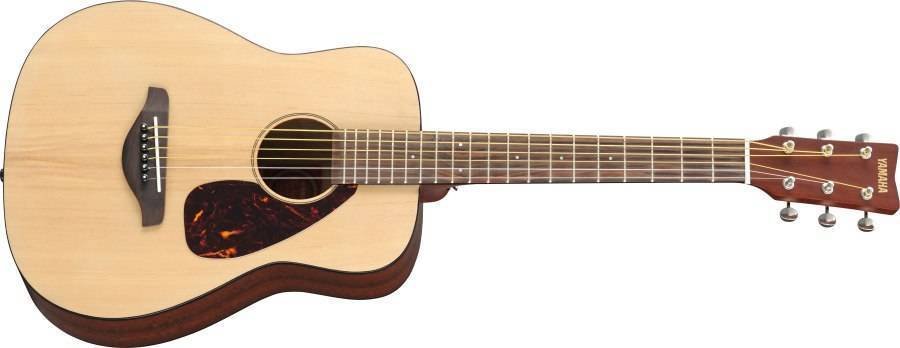

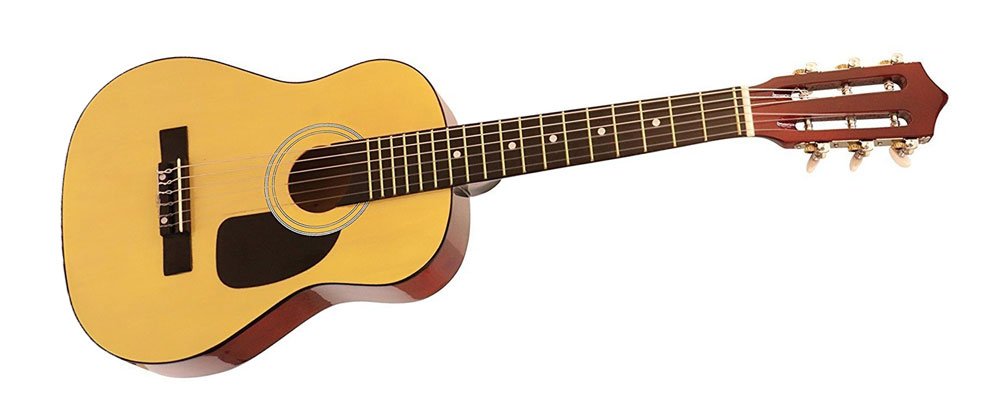

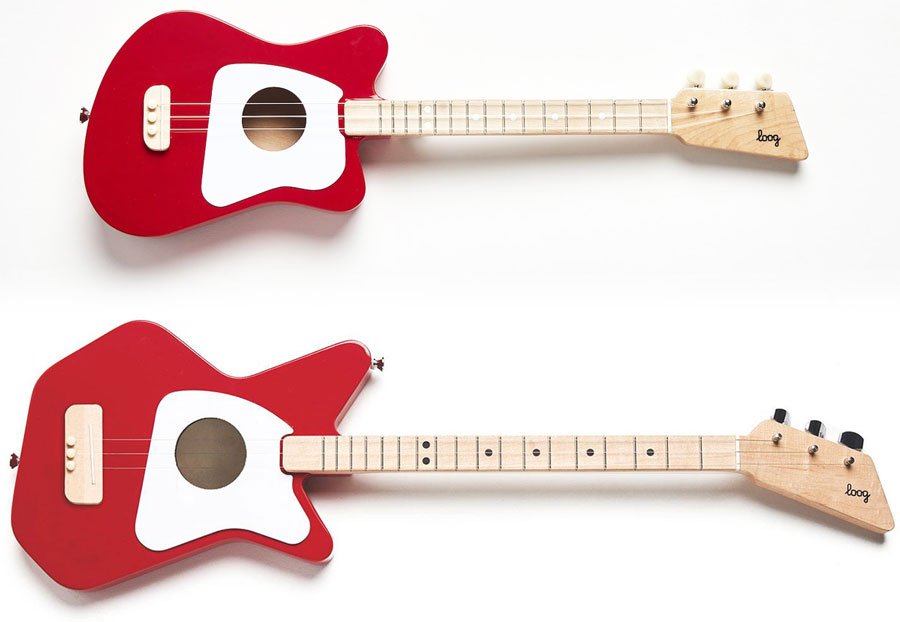

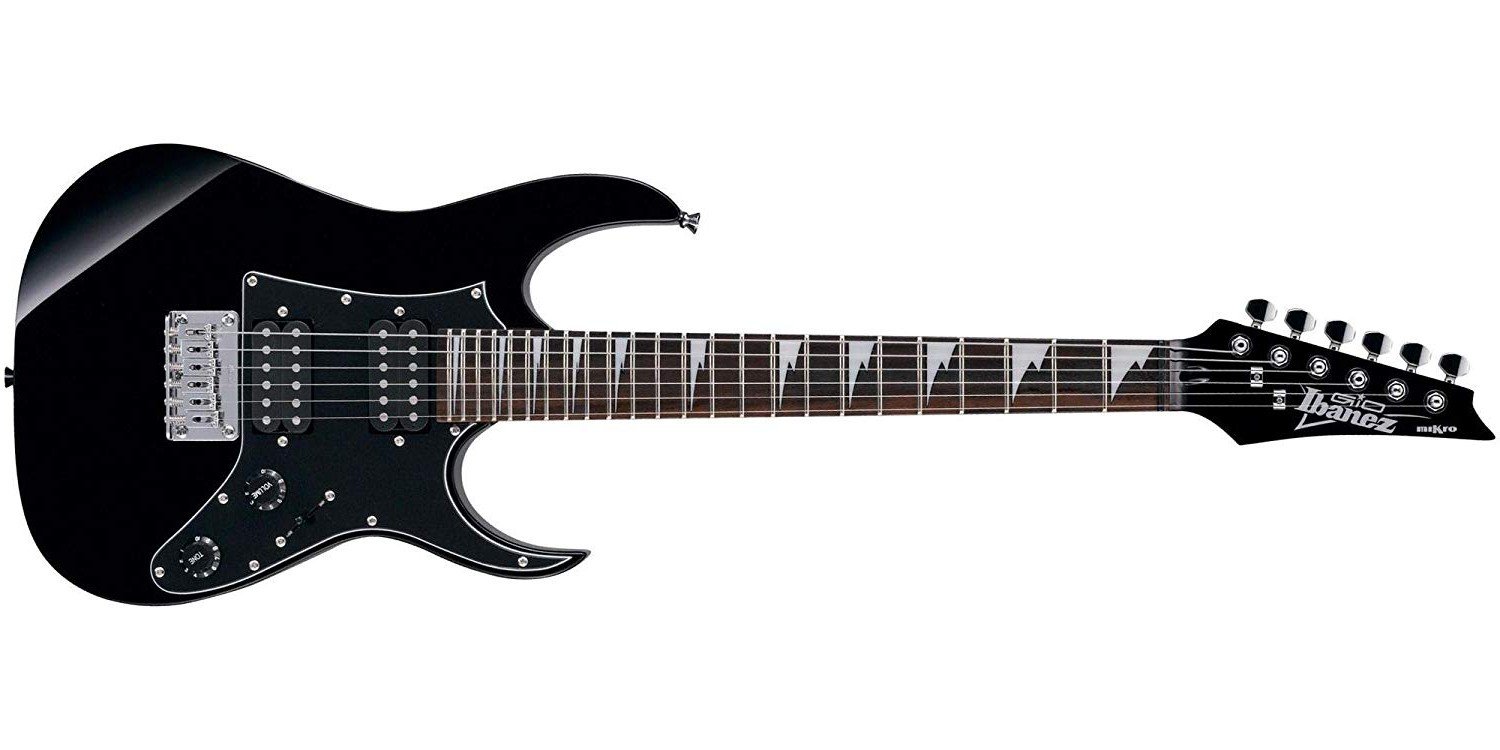
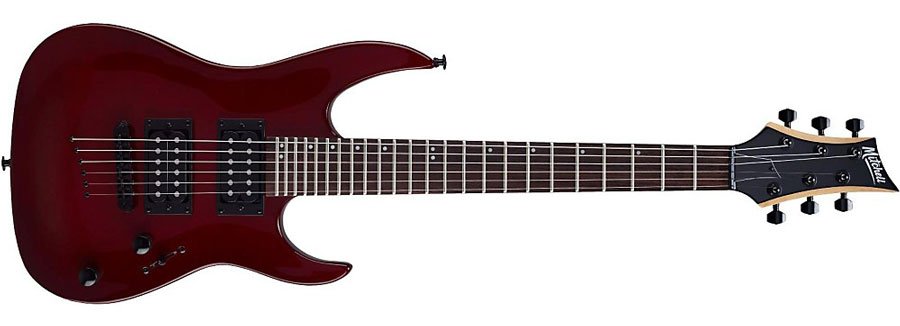
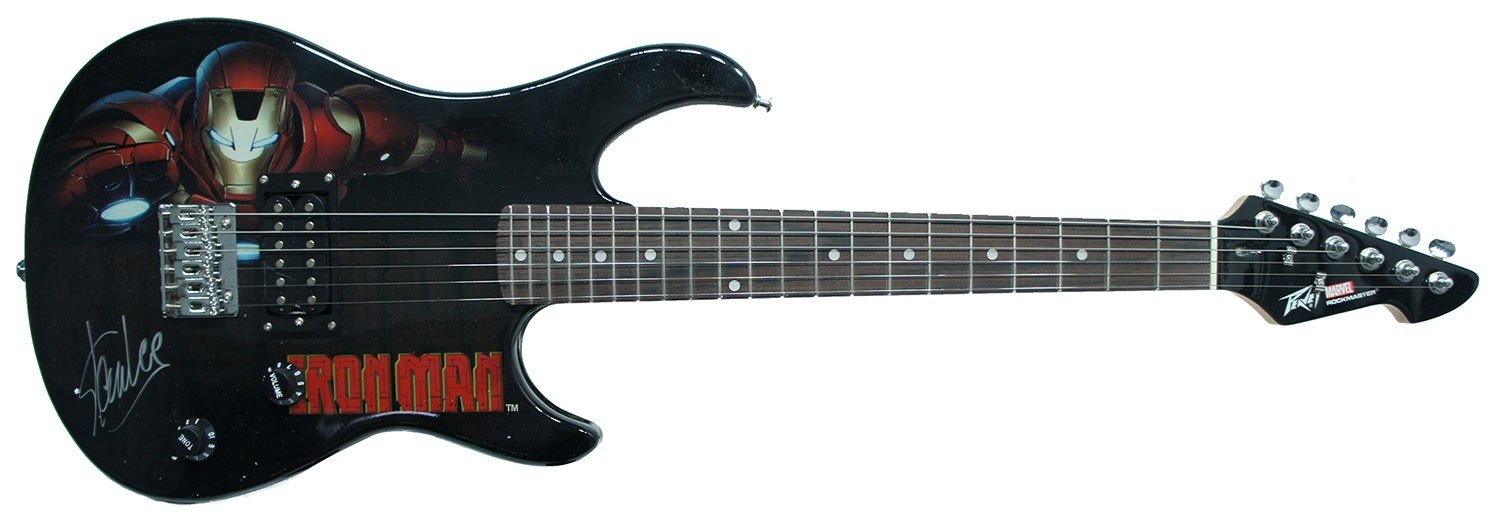


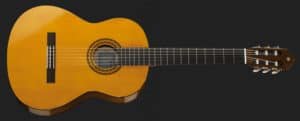

Looking for a 1/2 size electric guitar, A/C box amp with case package, tuner and strap included. Not a toy.
Xmas gift for grandson. $150.00 range.
Please help.
Looking for either 1/2 size or 3/4 Size Left handed Beginner Electric Guitar Premium Pack with Amp for my 6yr grandson. Must be Blue or Red. Extremely enthusiastic.
I would suggest starting him off on a right-handed guitar, not a left-handed one. Handedness doesn’t make any difference, because the hands have to learn totally new skills either way. If he starts out on a right-handed guitar, you’ll have many more choices in choosing something suitable, and he’ll have many more guitar choices later on as well.